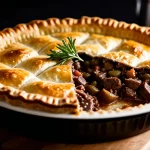Expert Tips for Baking the Ultimate Victoria Sponge Cake
Baking excellence starts with the basics.
Achieving the perfect Victoria sponge cake depends heavily on starting with the right ingredients. Quality butter, fresh eggs, fine flour, and caster sugar form the foundation for a moist, tender crumb. Using less fresh or lower-grade components directly impacts the cake’s texture and flavour.
Topic to read : What are the best methods for preparing a traditional Yorkshire pudding?
Expert baking guidance emphasizes the importance of the proper creaming method. Cream the butter and sugar together until pale and fluffy—this step traps air, which helps create a light, airy sponge cake. Rushing or skipping this can produce a dense result.
Precision is key. Baking advice consistently highlights careful measuring and thorough sifting of dry ingredients to avoid lumps and ensure even mixing. Using a kitchen scale or level tablespoons provides consistent results far superior to approximations.
This might interest you : How do you make a flavorful steak and kidney pie?
Combine these Victoria sponge cake tips to ensure each sponge cake recipe you follow yields a reliably soft, well-risen cake. Mastering these foundational practices builds confidence and lays the groundwork for delightful variations later on.
Mixing Techniques to Ensure a Perfect Sponge
Simple steps for flawless blending.
Using room temperature ingredients is essential in sponge cake mixing. Butter and eggs at room temperature blend smoothly, allowing sugar to dissolve into the fat, which creates the airy texture so prized in a Victoria sponge cake. Cold ingredients can cause batter to curdle or mix unevenly, leading to a heavy texture.
Folding techniques play a crucial role in preserving the trapped air from creaming. When adding flour or other dry ingredients, gently fold with a spatula rather than stir vigorously. This method helps maintain volume and avoids developing gluten that stiffens the crumb.
Beware of over-mixing, which is a common mistake in step-by-step baking. Excessive stirring after combining wet and dry ingredients deflates the batter and results in a dense sponge cake. Mix just until the ingredients are combined and no dry streaks remain.
By mastering cake mixing methods focused on ingredient temperature, gentle folding, and measured mixing, you set the foundation for a light, tender cake. These sponge cake mixing tips are essential for any baker aiming to get the texture exactly right every time.
Baking Process: Temperature, Timing, and Common Mistakes
Photosensitive precision leads to a flawless sponge.
Maintaining the correct oven temperature is fundamental in sponge cake baking. The recommended range usually sits between 170°C and 180°C (338°F–356°F) for even baking. Temperatures too high can cause a crusty exterior with an undercooked center, while too low results in a dense, poorly risen sponge.
Baking times vary by pan size and oven type, but a typical Victoria sponge cake requires about 20-25 minutes. Checking doneness involves inserting a skewer into the cake’s center; a clean skewer indicates the cake is baked through. Using an oven thermometer is advisable to avoid inaccurate built-in oven readings.
Common mistakes include underbaking, which leaves a wet, heavy texture, and overbaking, leading to dryness. Uneven rise often stems from incorrect oven temperature or overmixing the batter. Placing the cake in the oven center and avoiding frequent door openings helps maintain stable baking conditions.
Following these baking tips ensures your sponge cake bakes evenly, rises well, and achieves the ideal light texture essential for perfect Victoria sponge cake success.
Classic vs. Modern Victoria Sponge Cake Variations
Evolving traditions with delicious creativity.
The traditional sponge cake relies on the classic trio: butter, sugar, and self-raising flour, filled simply with raspberry jam and whipped cream. Expert baking guidance notes that this combination delivers the iconic light texture and nostalgic flavour most associated with a Victoria sponge cake.
Modern variations, however, experiment with ingredient swaps and flavour twists to suit different preferences. For example, some bakers substitute butter with oil or add ground almonds, creating moistness and a delicate nutty aroma. Others choose fillings beyond jam, such as lemon curd or mascarpone, enhancing complexity without sacrificing the cake’s softness.
Dietary adjustments are increasingly popular. Gluten-free flours or dairy-free creams provide inclusive options without compromising the signature light crumb. These Victoria sponge cake tips on adapting recipes empower bakers to explore innovative flavours while respecting the cake’s heritage.
Choosing fillings like fruit preserves or fresh berries adds freshness, while subtle infusions of vanilla or citrus zest brighten the sponge. Whether classic or modern, thoughtful ingredient blending defines the best sponge cake recipe. Experimenting encourages creativity and delight, keeping the Victoria sponge cake ever relevant and beloved.





